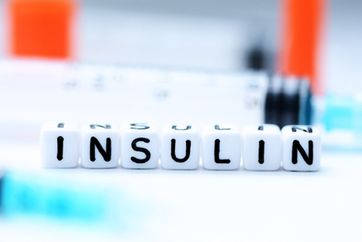Insulin patch proves effective for adults with type 2 diabetes
An insulin patch can safely provide similarly effective glycemic management in adults with type 2 diabetes compared with a standard insulin pen, according to findings published in Diabetes Technology & Therapeutics.

“Patient barriers to insulin use include fear of injections, perceived social stigma, interference with daily activities, reduced quality of life and increased cost,” Richard M. Bergenstal, MD, executive director of the International Diabetes Center Park Nicollet in Minneapolis, and colleagues wrote. “Some technological advances to simplify insulin delivery may address some of the abovementioned barriers. In recent years, a number of wearable devices have been designed and developed to deliver basal and/or mealtime insulin.”
Bergenstal and colleagues conducted a randomized controlled trial in which 278 adults with type 2 diabetes (mean age, 59.2 years; 40% women) from 62 clinical centers were randomly assigned to use an insulin patch (PAQ-MEAL, CeQur) or an insulin pen for 44 weeks before switching treatment methods for the final 4 weeks to compare their experience with the two device types. Participants were primarily from the United States (78%) with participants from France (12%), the U.K. (8%) and Germany (2%) also represented.
During the study, participants used the patch or pen to deliver insulin before a meal. They also recorded self-monitored blood glucose levels and used this information along with an insulin adjustment algorithm to increase or decrease dosage as needed. Adverse events were also self-reported.

Compared with baseline measures, at the halfway point (24 weeks), participants using the patch had a similar reduction in HbA1c (–1.7%) as the participants using the pen (–1.6%), and these measures were maintained at 44 weeks as well. The researchers further found that a similar number of those who used the patch decreased their HbA1c level below 7% (65%) compared with those who used a pen (63%) at 44 weeks.
After 44 weeks, each group reported the same number of hypoglycemic events (three), and rates of adverse events were not significantly different, the researchers wrote. There was no significant difference in adherence rates for those who used the patch and those who used the pen at 24 weeks (79% vs. 78%, respectively) and 44 weeks (81% vs. 81%), but those who used the patch reported higher satisfaction (P < .01) at 24 weeks compared with those who used the pen. In addition, the patch was favored by more than 90% of health care providers compared with the pen.
“These factors, combined with health care provider recognition of the positive experience of subjects using the patch, might reduce barriers to providers recommending and implementing mealtime insulin therapy in real-world settings,” the researchers wrote. “If clinical inertia can be reduced, patients may benefit from reduced exposure to hyperglycemia, which is likely to reduce the risk of diabetes complications.” – by Phil Neuffer
Disclosures: The authors report no relevant financial disclosures.
